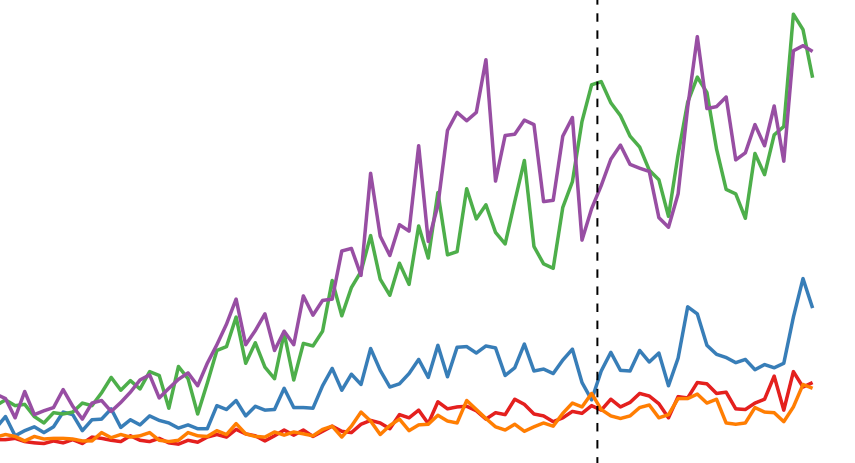The State and Local Finance Twittersphere

April 5, 2022
By Justin Marlowe, Research Professor and Associate Director of the Center for Municipal Finance, University of Chicago
On March 24, 2022, the Michigan Department of Treasury shared a blizzard of information through its official Twitter feed (@MiTreasury). It promoted its upcoming fiscal health webinars for local officials. It explained how the state planned to distribute more than $40 million in marijuana tax dollars to local governments. It celebrated that Michigan gas station owners had recovered more than $90,000 in one day through Treasury’s unclaimed property program. Add in eight “retweets” from other state agencies and professional associations, and it’s fair to call March 24 a productive day at the virtual office.
Michigan Treasury’s virtual presence reminds us that social media generally, and Twitter in particular, is an essential cog in today’s state and local finance machinery. Among other things, budget directors, treasurers, comptrollers, and auditors now use it to convey essential information to taxpayers, to highlight key financial policy initiatives, and to coordinate outreach efforts across state agencies. And they’re using it more than ever. According to a recent paper, the number of finance-relevant words in state and local public finance officials’ tweets increased fivefold from 2017 through 2020.
With all this short-form information filling the internet, the question arises as to whether there’s anything researchers can learn from patterns among the tweets?
It turns out the answer is yes.
The figure above illustrates some of those patterns. It’s based on analysis of more than 150,000 tweets from 105 state and local government finance officials from January 2014 through February 2022. It shows the number of financial words included in those tweets every month in that time period. Each of those words conveys one of five “sentiments” – “negative,” “positive,” “constraining,” “uncertain” and “litigious,” which is meant for wording in a tweet that describes a legal contest or the legal environment. (The analysis shown here applies methods used in the previously mentioned paper to more recent data.)
Three trends emerged as shown in this chart. First, state and local finance tweets contain more financial words since the pandemic began. Since March 2020 – indicated by the dashed vertical line – monthly total tweeted sentiment words are up more than 35% on average. Perhaps that’s not surprising, given that finance officials had much to communicate about the influx of federal dollars, the many well publicized state and local efforts to assist unemployed workers and shuttered businesses, and suspensions of state and local tax filing deadlines, among many other Covid-driven developments.
Second, there was a big surge in negative sentiment as the pandemic took hold. In the ten months before the pandemic state and local finance officials tweeted roughly 1.5 positive words for every negative word. Common positive sentiment words like “honored,” “leadership,” and “opportunity” were Twitter mainstays during this time. But from March 2020 through December 2020, they tweeted roughly two negative words for every positive word. Words like “lost,” “concern,” and “questions” dominated the latter half of 2020.
Third, as the pandemic recovery has taken hold, the ratio of positive to negative sentiment has balanced out. Since vaccines were rolled out in early 2021, the ratio of positive to negative words has remained almost exactly 1:1. Today’s state and local finance sentiment seems to track broader public sentiment toward Covid.
It’s important to note that not all state and local finance officials tweet alike. Auditors’ tweets have been inclined to be more negative in nature than those of their colleagues. Prior to the pandemic they tweeted 1.1 negative words for every positive word. Since Covid it’s 1.4 negative to positive.
Chief Finance Officers/Comptrollers, by contrast, have gone from quite positive to just slightly positive. They tweeted 1.38 positive words for every negative word before the pandemic, and 1.1 positive to negative since. CFOs/Comptrollers are also much more prolific. They tweeted 13,243 finance words in the two years before the pandemic, and 19,327 in the two years since. That’s more than twice the auditors and nearly five times the budget officials.
Do state and local finance officials’ personal and campaign tweets convey different sentiments than official government tweets? Personal and campaign tweets are not official positions, and might afford much more latitude to convey strong positive or negative sentiments. At the moment, state and local finance officials maintain 42 personal/campaign Twitter accounts. When we apply this same analysis to those tweets, we see they are essentially the same as official tweets. They convey the same positive-negative sentiment mix, and like official accounts, auditors’ personal/campaign tweets are the most negative.
The one key difference is that personal/campaign tweets are noticeably more litigious. For official Twitter feeds, litigious words are 10-15% of the total tweeted words for most months since 2014. For political/campaign feeds, they’re 30-40% of the pre-pandemic total, and almost 50% of the post-pandemic total. It turns out personal/campaign tweets are more likely than official tweets to use word like “statutory,” “amendment,” and “testify” to describe proposed and actual legislation. Whether “litigious” and “legislative” convey the same sentiment is an important research question going forward.
The state and local finance Twittersphere has something to say. As such, state and local finance officials should carefully consider how they use Twitter to convey a broader message, and the practical, policy, and ethical challenges that
The contents of this blog post reflect those of the author, and not necessarily those of the GFRC.